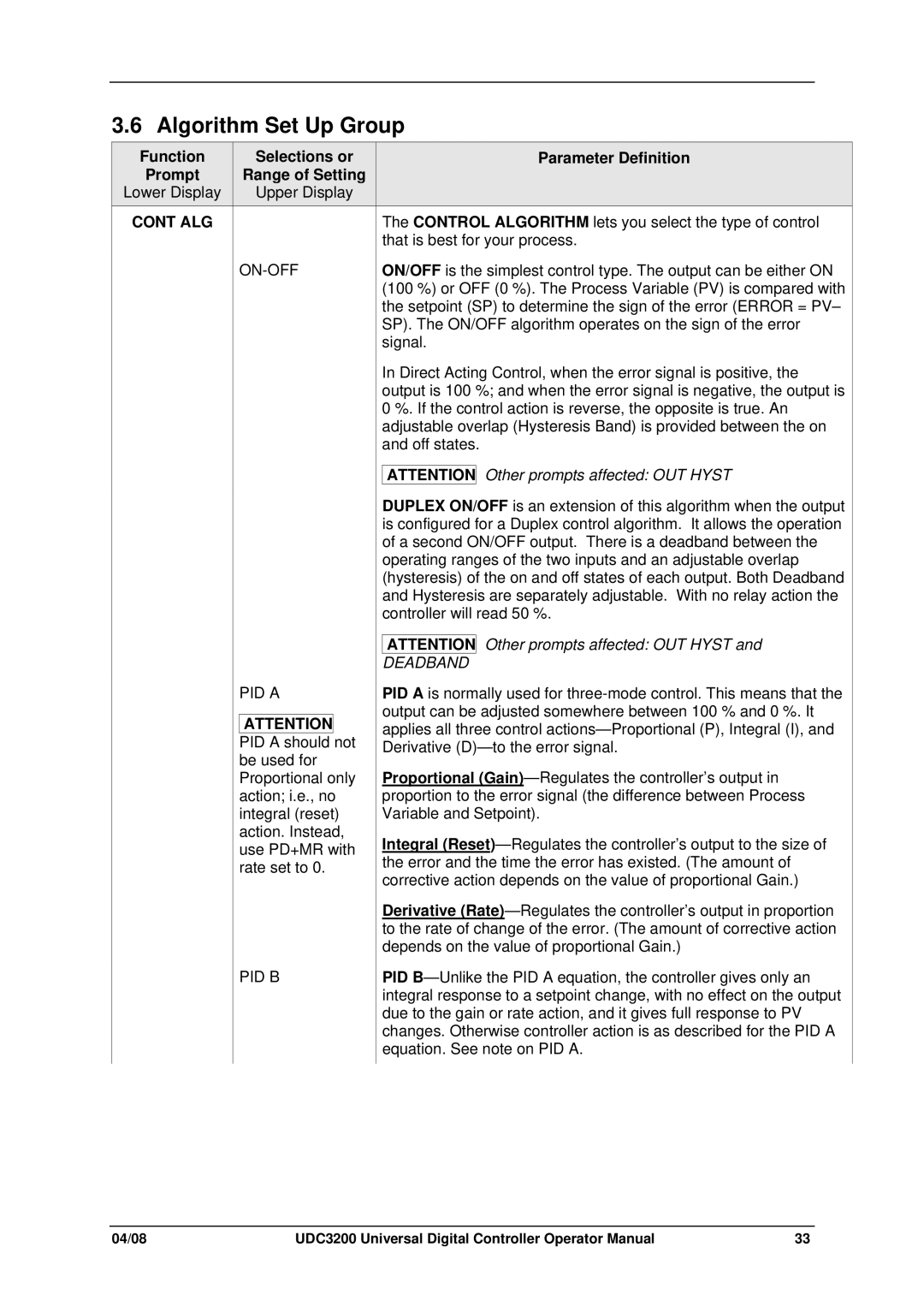
3.6 Algorithm Set Up Group
Function | Selections or |
Prompt | Range of Setting |
Lower Display | Upper Display |
CONT ALG |
|
|
|
PID A
ATTENTION
PID A should not be used for Proportional only action; i.e., no integral (reset) action. Instead, use PD+MR with rate set to 0.
PID B
Parameter Definition
The CONTROL ALGORITHM lets you select the type of control that is best for your process.
ON/OFF is the simplest control type. The output can be either ON (100 %) or OFF (0 %). The Process Variable (PV) is compared with the setpoint (SP) to determine the sign of the error (ERROR = PV– SP). The ON/OFF algorithm operates on the sign of the error signal.
In Direct Acting Control, when the error signal is positive, the output is 100 %; and when the error signal is negative, the output is 0 %. If the control action is reverse, the opposite is true. An adjustable overlap (Hysteresis Band) is provided between the on and off states.
ATTENTION Other prompts affected: OUT HYST
DUPLEX ON/OFF is an extension of this algorithm when the output is configured for a Duplex control algorithm. It allows the operation of a second ON/OFF output. There is a deadband between the operating ranges of the two inputs and an adjustable overlap (hysteresis) of the on and off states of each output. Both Deadband and Hysteresis are separately adjustable. With no relay action the controller will read 50 %.
ATTENTION Other prompts affected: OUT HYST and
DEADBAND
PID A is normally used for
Proportional
Integral
Derivative
PID
04/08 | UDC3200 Universal Digital Controller Operator Manual | 33 |
